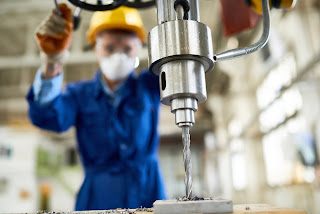Maximizing Efficiency: A Comprehensive Guide to Using an Optimizing Saw
In industries where precision cutting and material efficiency are crucial, the optimizing saw stands out as an essential tool. This advanced piece of equipment is designed not only to make precise cuts but also to optimize material usage, minimize waste, and enhance overall productivity. Whether you’re in woodworking, metalworking, or any industry that requires precise material cutting, an optimizing saw can revolutionize your workflow.
What is an Optimizing Saw?
An
optimizing saw is a specialized cutting machine that uses advanced software to
analyze and determine the most efficient way to cut materials. The goal is to
reduce waste and maximize the yield from each piece of raw material. These
machines are commonly used in high-volume production environments, such as lumber
mills, furniture manufacturing, and metal fabrication shops. They are capable
of making complex calculations quickly, ensuring that every cut is as efficient
as possible.
The
saw is typically equipped with sensors and scanning systems that assess the material
for defects or irregularities. The software then calculates the best cutting
patterns to avoid these imperfections, ensuring that only the best parts of the
material are used.
Benefits of Using an Optimizing Saw
- Material
Efficiency:
The primary benefit of using an optimizing saw is its ability to maximize
material usage. By analyzing each piece of material before cutting, the
saw ensures that every inch is used as effectively as possible. This
results in less waste, which can lead to significant cost savings,
especially in large-scale production.
- Precision and
Consistency:
Optimizing saws are known for their precision. The software ensures that
each cut is made with exacting accuracy, reducing the chances of errors.
This precision is crucial in industries where tight tolerances are
required, ensuring that each piece fits perfectly with the next.
- Increased
Productivity:
The automation and efficiency of an optimizing saw allow for faster
production times. By reducing the need for manual adjustments and minimizing
material waste, these saws enable production lines to operate at higher
speeds without sacrificing quality.
- Versatility: Optimizing saws are versatile
machines that can handle a wide range of materials, from wood to metal to
plastics. This versatility makes them a valuable addition to any
production facility, as they can be used across different stages of
manufacturing.
- Cost Savings: The combination of reduced
material waste, increased productivity, and enhanced precision leads to
significant cost savings over time. Although the initial investment in an
optimizing saw may be high, the long-term benefits far outweigh the costs,
making it a wise investment for any production-oriented business.
Best Practices for Using an Optimizing
Saw
- Proper Material
Scanning:
Ensure that the material is properly scanned and assessed before cutting.
This will allow the optimizing software to make accurate calculations and
maximize material efficiency.
- Regular
Maintenance:
Like all machinery, optimizing saws require regular maintenance to
function at their best. Keep the blades sharp, clean the sensors, and
check the software for updates to ensure optimal performance.
- Operator
Training:
Even with automation, operator expertise is crucial. Proper training
ensures that the machine is used to its full potential, and operators can
quickly troubleshoot any issues that arise.
- Utilize Software Features: Take full advantage of the software’s capabilities. Many optimizing saws come with customizable settings that allow you to tailor the cutting process to your specific needs. Experiment with these features to find the most efficient cutting patterns for your materials.
Conclusion
An
optimizing saw is more than just a cutting tool; it’s
a powerful ally in maximizing material efficiency and productivity. By
leveraging advanced software and precision cutting technology, optimizing saws
help businesses reduce waste, save on costs, and produce high-quality products
with greater consistency. Whether you’re operating a large-scale production
facility or a smaller workshop, investing in an optimizing saw can provide a
significant return on investment by streamlining your operations and enhancing
your bottom line.



Comments
Post a Comment